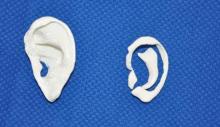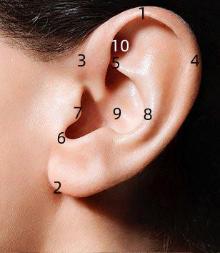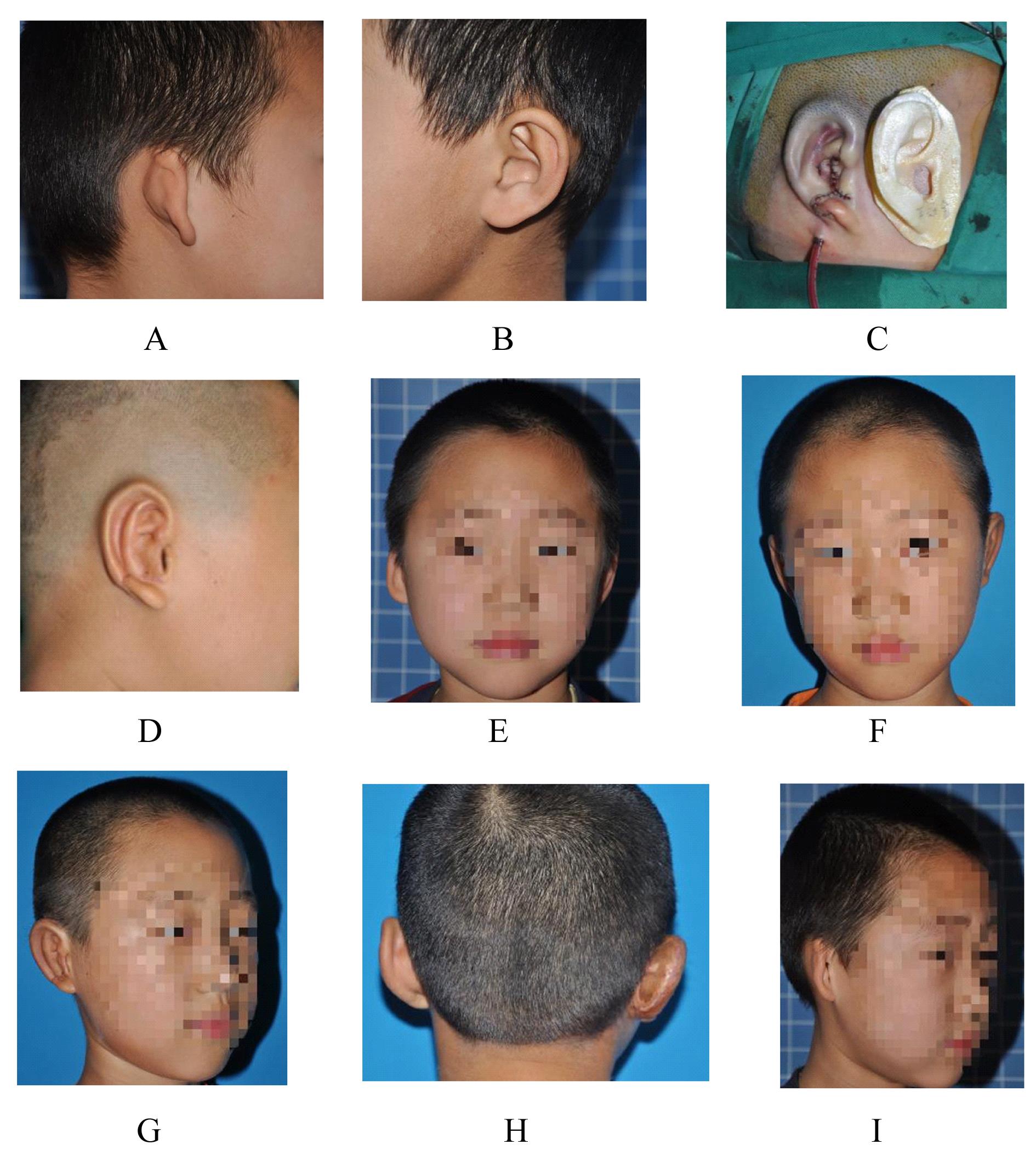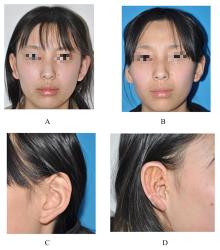| 1 |
ELBANOBY T M, ELBATAWY A M, ALY G M, et al. 3D printing guided surgery in the treatment of unicoronal craniosynostosis orbital dysmorphology[J]. Oral Maxillofac Surg, 2020, 24(4): 423-429.
|
| 2 |
KIRBY B, KENKEL J M, ZHANG A Y, et al. Three-dimensional (3D) synthetic printing for the manufacture of non-biodegradable models, tools and implants used in surgery: a review of current methods[J]. J Med Eng Technol, 2021, 45(1): 14-21.
|
| 3 |
ZOPF D A, MITSAK A G, FLANAGAN C L, et al. Computer aided-designed, 3-dimensionally printed porous tissue bioscaffolds for craniofacial soft tissue reconstruction[J]. Otolaryngol Head Neck Surg, 2015, 152(1): 57-62.
|
| 4 |
CHANG J B, SMALL K H, CHOI M, et al. Three-dimensional surface imaging in plastic surgery: foundation, practical applications, and beyond[J]. Plast Reconstr Surg, 2015, 135(5): 1295-1304.
|
| 5 |
KANEKO T. A system for three-dimensional shape measurement and its application in microtia ear reconstruction[J]. Keio J Med, 1993, 42(1): 22-40.
|
| 6 |
ZHOU J Y, PAN B, YANG Q H, et al. Three-dimensional autologous cartilage framework fabrication assisted by new additive manufactured ear-shaped templates for microtia reconstruction[J]. J Plast Reconstr Aesthet Surg, 2016, 69(10): 1436-1444.
|
| 7 |
WAN R, XIE W G, LI Z W, et al. The study of using 3D scan technique to evaluate the expanding method of ear reconstruction before operation[J]. Aesth Plast Surg, 2020, 44(2): 359-364.
|
| 8 |
刘翔宇, 刘宗辉, 王 璐, 等. 数字化技术在先天性小耳畸形整复中的应用研究[J]. 中华整形外科杂志, 2019, 35(4): 367-370.
|
| 9 |
FAN X M, NIU X M, WANG Y B, et al. Comparison of three-dimensional and two-dimensional templates on auricle reconstruction in patients with unilateral microtia[J]. Am J Transl Res, 2019, 11(6):3771-3778.
|
| 10 |
CHEN Z C, ALBDOUR M N, LIZARDO J A, et al. Precision of three-dimensional stereo-photogrammetry (3dMD™) in anthropometry of the auricle and its application in microtia reconstruction[J]. J Plast Reconstr Aesthet Surg, 2015, 68(5): 622-631.
|
| 11 |
唐 玲, 田广永, 胡力达, 等. 3-D打印技术在个体化耳廓重建中的应用[J]. 中华耳科学杂志, 2017, 15(2): 267-271.
|
| 12 |
CHEN H Y, NG L S, CHANG C S, et al. Pursuing mirror image reconstruction in unilateral microtia: customizing auricular framework by application of three-dimensional imaging and three-dimensional printing[J]. Plast Reconstr Surg, 2017, 139(6): 1433-1443.
|
| 13 |
王逸云, 杨韩芳, 崖 骞, 等. 3D打印技术和数字化模型在全耳郭撕脱伤个性化耳再造术中的应用[J]. 中国美容整形外科杂志, 2021, 32(4): 201-203, 258.
|
| 14 |
ZHANG Q, ZHANG R H, XU F, et al. Auricular reconstruction for microtia: personal 6-year experience based on 350 microtia ear reconstructions in China[J]. Plast Reconstr Surg, 2009, 123(3): 849-858.
|
| 15 |
BAUER B S. Reconstruction of microtia[J]. Plast Reconstr Surg, 2009, 124(1 ): 14e-26e.
|
| 16 |
JOUKHADAR N, MCKEE D, CAOUETTE-LABERGE L, et al. Management of congenital auricular anomalies[J]. Plast Reconstr Surg, 2020,146(2): 205e-216e.
|
| 17 |
REINISCH J, TAHIRI Y. Polyethylene ear reconstruction: a state-of-the-art surgical journey[J]. Plast Reconstr Surg, 2018, 141(2): 461-470.
|
| 18 |
PARK J Y, PARK C. Microtia reconstruction in hemifacial microsomia patients: three framework coverage techniques[J].Plast Reconstr Surg,2018,142(6): 1558-1570.
|
| 19 |
LI Q, ZHOU X, WANG Y, et al. Auricular reconstruction of congenital microtia by using the modified Nagata method: personal 10-Year experience with 1350 cases[J]. J Plast Reconstr Aesthet Surg, 2018, 71(10): 1462-1468.
|
| 20 |
詹佳楠, 杨 洋, 黄文华. 3D打印技术在康复支具制作的应用研究[J]. 中国医学物理学杂志, 2022, 39(10): 1310-1312.
|
| 21 |
CHIU L L Y, WEBER J F, WALDMAN S D. Engineering of scaffold-free tri-layered auricular tissues for external ear reconstruction[J]. Laryngoscope, 2019, 129(8): E272-E283.
|
| 22 |
KIM H Y, JUNG S Y, LEE S J, et al. Fabrication and characterization of 3D-printed elastic auricular scaffolds: a pilot study[J]. Laryngoscope, 2019, 129(2): 351-357.
|
| 23 |
ALHAZMI B, ALSHOMER F, ALAWIRDHI B. Multiscale sterilizable 3D printed auricular templates to guide cartilaginous framework sizing and sculpture during autologous microtia reconstruction[J]. JPRAS Open, 2021, 28: 121-125.
|
| 24 |
MUSSI E, FURFERI R, VOLPE Y, et al. Ear reconstruction simulation: from handcrafting to 3D printing[J]. Bioengineering (Basel), 2019, 6(1): 14.
|
| 25 |
CUGNO S, BULSTRODE N W. Cartilage exposure following autologous microtia reconstruction: an algorithmic treatment approach[J]. J Plast Reconstr Aesthetic Surg, 2019, 72(3): 498-504.
|
| 26 |
黄庆华, 杨 斌. 3D打印技术在半侧颜面短小畸形治疗中的应用及研究进展[J]. 中华医学美学美容杂志, 2020, 26(1): 73-75.
|
| 27 |
REIFFEL A J, KAFKA C, HERNANDEZ K A, et al. High-fidelity tissue engineering of patient-specific auricles for reconstruction of pediatric microtia and other auricular deformities[J].PLoS One,2013,8(2): e56506.
|
| 28 |
XU T, BINDER K W, ALBANNA M Z, et al. Hybrid printing of mechanically and biologically improved constructs for cartilage tissue engineering applications[J]. Biofabrication, 2013, 5(1): 015001.
|
| 29 |
VISSER J, MELCHELS F P, JEON J E, et al. Reinforcement of hydrogels using three-dimensionally printed microfibres[J]. Nat Commun, 2015, 6: 6933.
|
| 30 |
LEE C H, RODEO S A, FORTIER L A, et al. Protein-releasing polymeric scaffolds induce fibrochondrocytic differentiation of endogenous cells for knee meniscus regeneration in sheep[J]. Sci Transl Med, 2014, 6(266): 266ra171.
|
| 31 |
陈召阳, 罗春材, 尚 骁, 等. 肋软骨多层螺旋CT容积重建和3D打印技术在耳廓再造术中的应用[J]. 中华整形外科杂志, 2017, 33(2): 97-101.
|
 )
)











